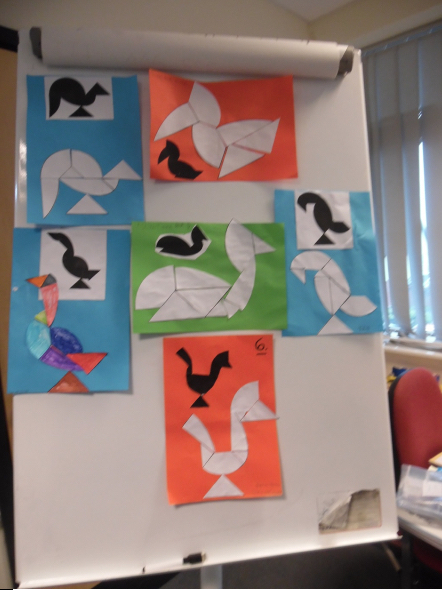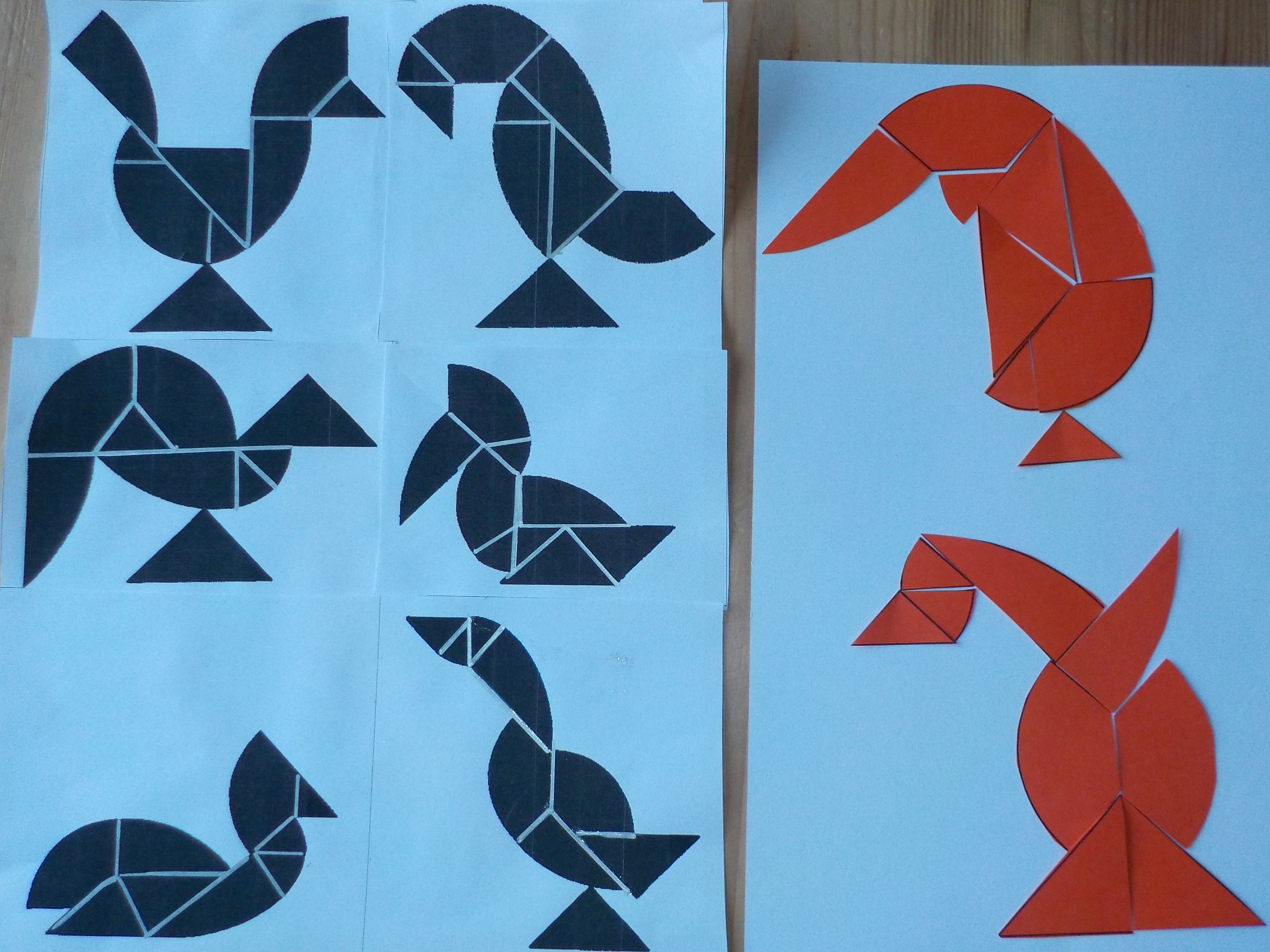Skip over navigation
This solution came in from Dussindale Primary Norwich
Y6 Drake Class - we did this as a class activity in twos/threes. Attaching the picture of all 6 completed. Top left was the fastest - within 10 minutes (including the cutting out). The next 4 were completed within 30 minutes but number 6 (at the bottom) took an age and more than one group had a go. Resilience paid off when Hector, Chloe, Patrick & Charlie cracked it part way through our afternoon session.

”‹Kit also sent in this solution (but not sure from which school?)
To begin, we looked for shapes that were easy to recognise. In each bird shape, there was at least one part where the piece to use was easy to spot, for example, in four of the birds there is a large triangle for the feet/legs. Sometimes a second piece of the 'puzzle' could be placed quickly. For example, both the rooster's tail (bird top left) and the peacock's tail (bird middle left) could only be one of the pieces with two straight sides and one long, curved side.
Then we looked at the curves on the outsides of the bird shapes and figured out where to put the pieces by looking at the lengths and depths of the curves. Short, straight sections in the outlines of the birds helped us to work out some of the other pieces.
Sometimes pieces were harder to place because there were no lines to follow, or because there was more than one piece that might fit on a line. In the end, it was trial and error to find which pieces went where.
We made some of our own bird shapes. Here are two of the best ones.

Thank you both for these excellent designs you've created.
Or search by topic
Number and algebra
Geometry and measure
Probability and statistics
Working mathematically
Advanced mathematics
For younger learners
Making Maths: Birds from an Egg
Age 7 to 11
Challenge Level 





- Problem
- Getting Started
- Student Solutions
- Teachers' Resources
This solution came in from Dussindale Primary Norwich
Y6 Drake Class - we did this as a class activity in twos/threes. Attaching the picture of all 6 completed. Top left was the fastest - within 10 minutes (including the cutting out). The next 4 were completed within 30 minutes but number 6 (at the bottom) took an age and more than one group had a go. Resilience paid off when Hector, Chloe, Patrick & Charlie cracked it part way through our afternoon session.

”‹Kit also sent in this solution (but not sure from which school?)
To begin, we looked for shapes that were easy to recognise. In each bird shape, there was at least one part where the piece to use was easy to spot, for example, in four of the birds there is a large triangle for the feet/legs. Sometimes a second piece of the 'puzzle' could be placed quickly. For example, both the rooster's tail (bird top left) and the peacock's tail (bird middle left) could only be one of the pieces with two straight sides and one long, curved side.
Then we looked at the curves on the outsides of the bird shapes and figured out where to put the pieces by looking at the lengths and depths of the curves. Short, straight sections in the outlines of the birds helped us to work out some of the other pieces.
Sometimes pieces were harder to place because there were no lines to follow, or because there was more than one piece that might fit on a line. In the end, it was trial and error to find which pieces went where.
We made some of our own bird shapes. Here are two of the best ones.

Thank you both for these excellent designs you've created.

